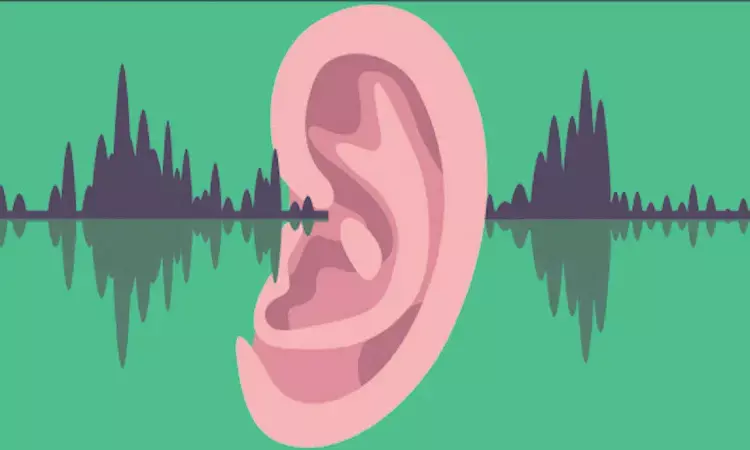- Home
- Medical news & Guidelines
- Anesthesiology
- Cardiology and CTVS
- Critical Care
- Dentistry
- Dermatology
- Diabetes and Endocrinology
- ENT
- Gastroenterology
- Medicine
- Nephrology
- Neurology
- Obstretics-Gynaecology
- Oncology
- Ophthalmology
- Orthopaedics
- Pediatrics-Neonatology
- Psychiatry
- Pulmonology
- Radiology
- Surgery
- Urology
- Laboratory Medicine
- Diet
- Nursing
- Paramedical
- Physiotherapy
- Health news
- Fact Check
- Bone Health Fact Check
- Brain Health Fact Check
- Cancer Related Fact Check
- Child Care Fact Check
- Dental and oral health fact check
- Diabetes and metabolic health fact check
- Diet and Nutrition Fact Check
- Eye and ENT Care Fact Check
- Fitness fact check
- Gut health fact check
- Heart health fact check
- Kidney health fact check
- Medical education fact check
- Men's health fact check
- Respiratory fact check
- Skin and hair care fact check
- Vaccine and Immunization fact check
- Women's health fact check
- AYUSH
- State News
- Andaman and Nicobar Islands
- Andhra Pradesh
- Arunachal Pradesh
- Assam
- Bihar
- Chandigarh
- Chattisgarh
- Dadra and Nagar Haveli
- Daman and Diu
- Delhi
- Goa
- Gujarat
- Haryana
- Himachal Pradesh
- Jammu & Kashmir
- Jharkhand
- Karnataka
- Kerala
- Ladakh
- Lakshadweep
- Madhya Pradesh
- Maharashtra
- Manipur
- Meghalaya
- Mizoram
- Nagaland
- Odisha
- Puducherry
- Punjab
- Rajasthan
- Sikkim
- Tamil Nadu
- Telangana
- Tripura
- Uttar Pradesh
- Uttrakhand
- West Bengal
- Medical Education
- Industry
Headphones, earbuds impact younger generations' future audio health

MELVILLE, N.Y.- As more and more people are taking advantage of music on the go, personal audio systems are pumping up the volume to the detriment of the listener's hearing. Children, teenagers, and young adults are listening to many hours of music daily at volumes exceeding the globally recommended public health limit of 70 decibels of average leisure noise exposure for a day for a year.
During the 180th Meeting of the Acoustical Society of America, which will be held virtually June 8-10, Daniel Fink, from The Quiet Coalition, and audiologist Jan Mayes will talk about the current research into personal audio system usage and the need for public health hearing conservation policies. Their session, "Personal audio system use can harm auditory health," will take place Thursday, June 10, at 11:35 a.m. Eastern U.S.
"Nonoccupational noise exposure in everyday life comes from a handful of noise sources: personal listening systems, especially for younger people; transit noise, home appliances; power tools; and entertainment (sports events, movies, parties (weddings, bar mitzvahs, birthday parties, etc.), NASCAR races, etc.)," Fink said.
In 2017, the Centers for Disease Control and Prevention reported almost 25% of American adults, age 20-69, have noise-induced hearing loss. Acquired hearing loss is associated with communication difficulties, social isolation, increased risk of falls and accidents, and health complications, including dementia in later life.
Auditory health risk is highest for people using personal audio systems for more than an hour a day at more than 50% volume over a five-year period. Disputing a recent Wall Street Journal article claiming 85 decibels is safe for children and teens, Fink said 85 decibels is not a safe exposure for anyone.
"People think the National Institute for Occupational Safety and Health 85 dBA recommended exposure level for noise is safe," he said. "But a noise level that won't prevent hearing loss in factory workers or heavy equipment operators is far too high for a young child whose ears have to last an entire lifetime."
Fink and Mayes will talk about the need for personal audio system noise emission standards and public education on their use "to prevent an imminent noise-induced hear loss epidemic when today's younger generations reach midlife."
"This isn't just a theoretical problem. Most people get too much noise every day," Fink said, citing studies from Western Michigan University and the National Institute for Occupational Safety and Health, and the University of Michigan School of Public Health and Apple.
180th Meeting of the Acoustical Society of America
Hina Zahid Joined Medical Dialogue in 2017 with a passion to work as a Reporter. She coordinates with various national and international journals and association and covers all the stories related to Medical guidelines, Medical Journals, rare medical surgeries as well as all the updates in the medical field. Email: editorial@medicaldialogues.in. Contact no. 011-43720751
Dr Kamal Kant Kohli-MBBS, DTCD- a chest specialist with more than 30 years of practice and a flair for writing clinical articles, Dr Kamal Kant Kohli joined Medical Dialogues as a Chief Editor of Medical News. Besides writing articles, as an editor, he proofreads and verifies all the medical content published on Medical Dialogues including those coming from journals, studies,medical conferences,guidelines etc. Email: drkohli@medicaldialogues.in. Contact no. 011-43720751


